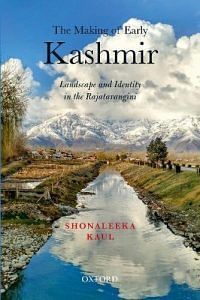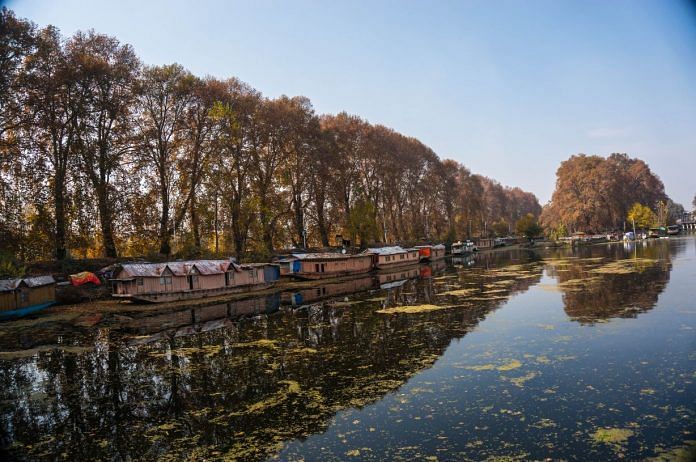Little is known about Kashmir beyond the media’s tales of violence. Shonaleeka Kaul’s book looks at the state that was once a premier centre of Sanskrit scholarship.
The Making of Early Kashmir: Landscape and Identity in the Rajatarangini by Shonaleeka Kaul, looks at Kashmir as a region that was once known as a premier centre of Sanskrit scholarship, the very same place that today is thought to be synonymous with the Urdu language.
The book, in the words of the author, aims to present a critical reinterpretation of a literary classic — Rajatarangini. It also attempts to improve our understanding of the origin and cultural composition of a region that has either been subjected to political assumptions or just ignored.
Kaul painstakingly elucidates how author Kalhan’s Rajatarangini establishes that Sanskrit was the chosen language of culture, communication and literature in early Kashmir and how it remained so, till the advent of foreign invaders.
It is interesting to note that the first and only comprehensive account of Kashmir– the Rajatarangini, has been written in scholarly Sanskrit and not in the vernacular tongue– Kashmiri, which came into usage much later. Kaul tells us how, in those days, Kashmir was regarded as the Centre for higher learning in Sanskrit.
Bemoaning the absence of Kashmir from school and college history textbooks, Kaul says this is the main reason for the widespread ignorance about this region’s history and legacy. Little is known about Kashmir beyond the media’s “tales of violence and strife”.
The land that “spearheaded all intellectual and cultural movements of the Indian subcontinent for at least 1500 years”, has been ignored for too long now. She points out how the Valley, which has been historically and traditionally, seen as cut off from the rest of India, has had extensive and rich interaction with neighbouring regions.
Rajatarangini , written in the 12th Century about the royal dynasties of Kashmir, is a Kavya or classic epic poem in Sanskrit. It was the first work of history in all of Sanskrit literature. Kaul feels that Rajatarangini has been the victim of a flawed approach wherein it was regarded as mere ‘history’ rather than the beautifully poetic text or Kavya it actually is.
Among the points that I found of special interest were the ones where Kaul refers to ‘vernacularisation’– involving the rise of regional kingdoms all over the subcontinent, accompanied by the rise of their own local languages as literary languages. Interestingly, as the author points out, this did not happen in Kashmir, the locally spoken ‘Kashmiri’ never gained the prestige or status that was given to Sanskrit. Even after Independence in 1947, it was Urdu and not Kashmiri that was accorded the status of the State Language thus continuing Jammu and Kashmir’s disassociation with the vernacular.
Even in present-day Kashmir, as noticed by Kaul, local Separatist Movements do not invoke Kashmiri when raising the call for ‘self-determination’.
The spiritual land of Kashmir was said to be often troubled by political upheavals and natural calamities like floods, factors which are so reminiscent of today’s Kashmir. Kalhan uses phrases like upaplavapriya desa- ‘a country which delighted in insurrection’- to describe Kashmir.
In the very first taranga, Kalhan writes: “Such is Kashmir, the country which may be conquered by the force of spiritual merit but not by armed force.” This speaks volumes for the insight that Kalhan provides into the Kashmiri psyche.
This book emphasises the deep and natural connections of Kashmir. Much before it was taken over by the sectarian identity politics of today, Kashmir had mastered the elements of the Indic which, in turn, drew upon the Valley’s rich learning and traditions. Kashmir, as Kaul reminds us, was venerated as Saradadesa or ‘the land of the Goddess of Learning’ and given respect and pride of place throughout India. The brilliant Kashmiri scholars like Vamana, Abhinavagupta, Rudrata, to name a few, made Kashmir an indispensable part of the Indic culture and tradition.
Sanskrit language, literature and culture was responsible for the very birth of Kashmir. Kaul states that there is no non-Sanskrit account of Kashmir and it was only in the 17th Century that the Persian narrations of her history had begun. Sanskrit was the first and dominant language of early Kashmir, a fact borne out by the names of several places in Kashmir which are derivatives of their Sanskrit names mentioned in the Rajatarangini 900 years ago.
There is so much that one can write about this well-researched and comprehensive analysis of Kalhan’s Rajatarangini that brings out certain enduring and deliberately downplayed features of Kashmir’s early history. To mention just a few: Baramulla=Varhamula,Tulmul= Tulyamulya, Bijbehara= Vijbror, Sopore= Suyyapura, Wular=Ullol.
It can be said with confidence that this is a book meant not only for historians but for every person interested in understanding the Rajatarangini and through it, Kashmir. The Making of Early Kashmir not only offers a fresh look at the earliest and most accurate poetic-historical account of Kashmir, it subtly debunks several misconceptions that have been built around the idea of the origin of Kashmir. It is definitely a must-read for every Kashmir-enthusiast.
Renuka Dhar Bazaz is an Associate Professor in English, Delhi University.

‘The Making of Early Kashmir by Shonaleeka Kaul’ has been published by Oxford University Press.



